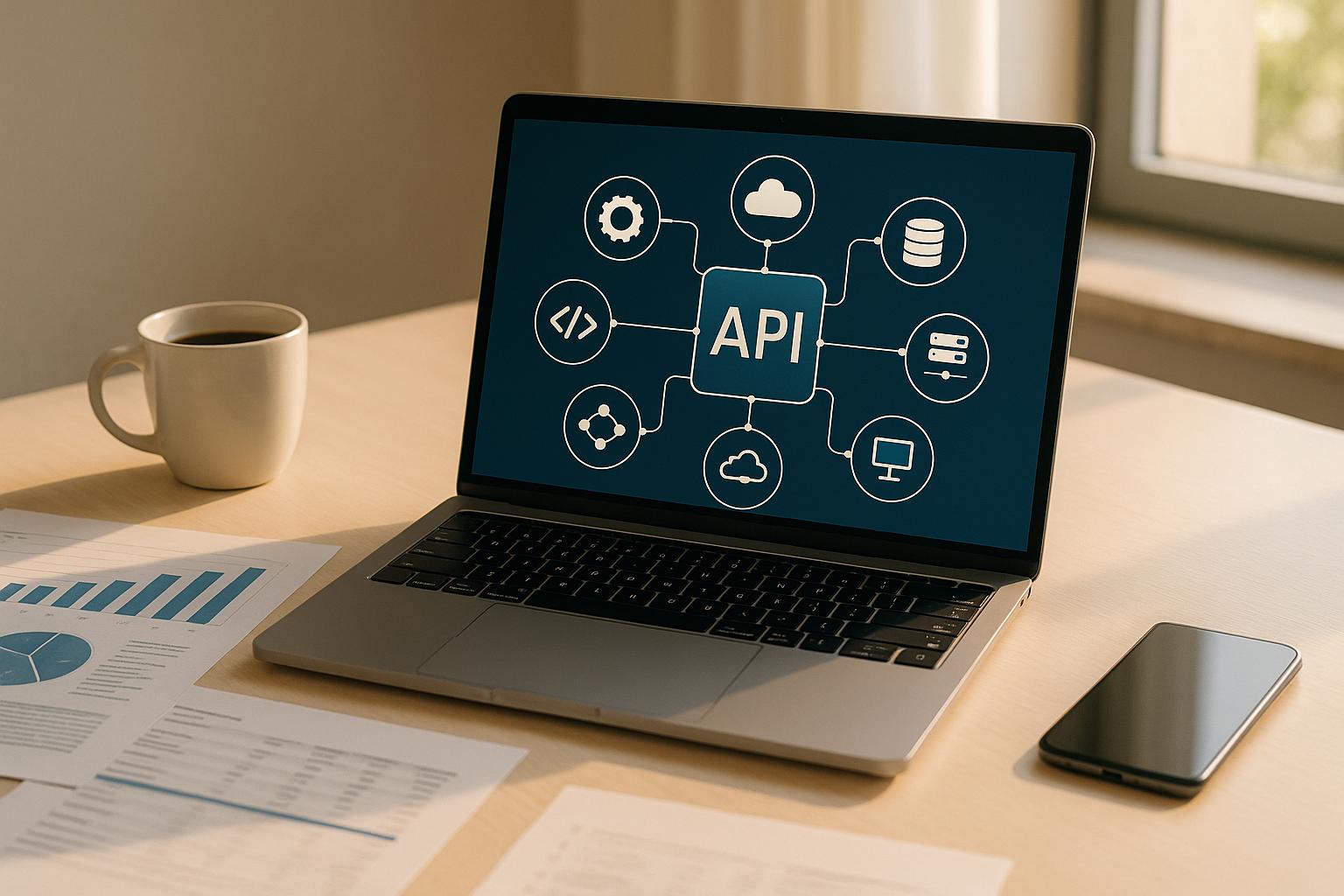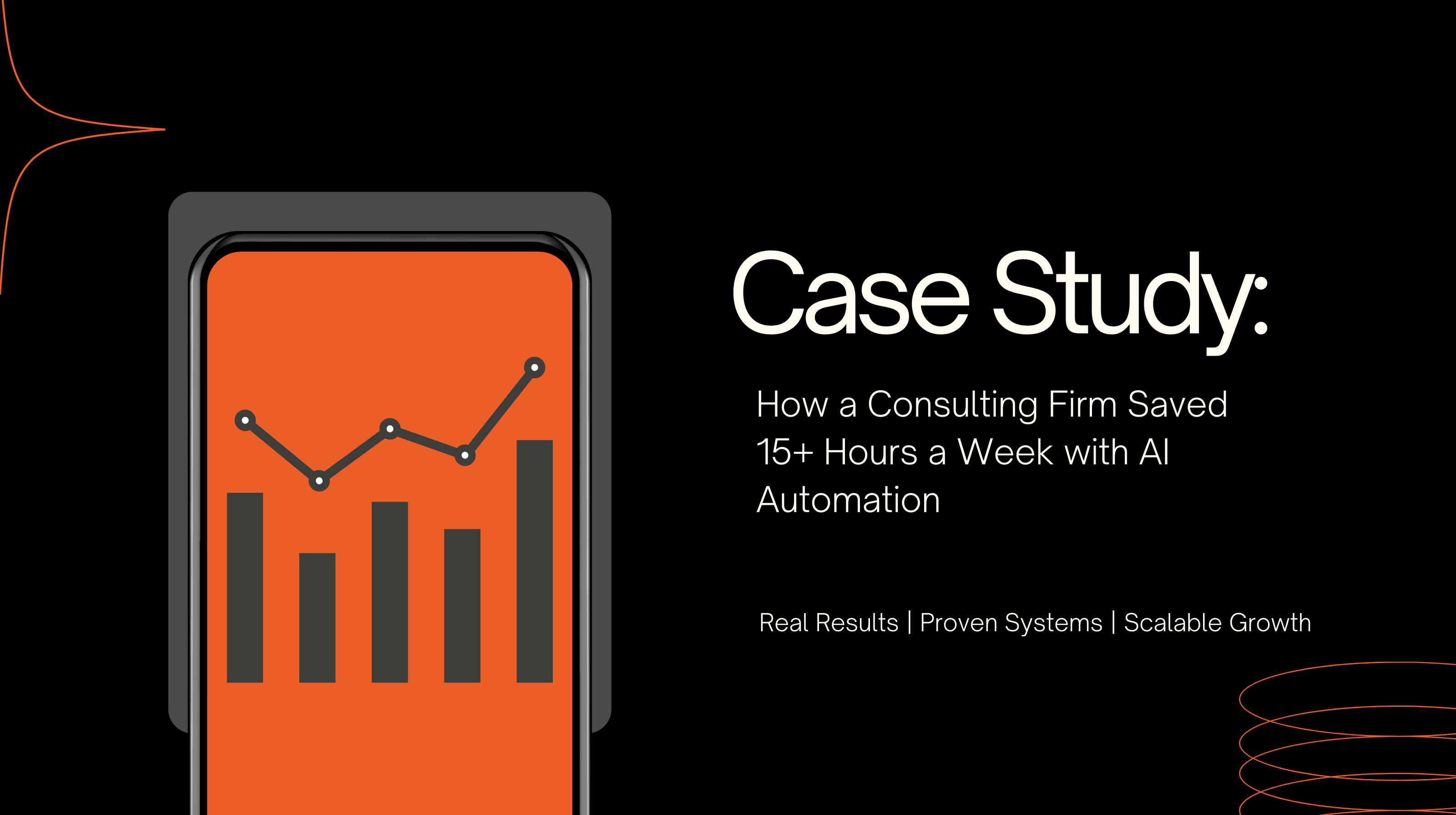API integrations connect systems, automate workflows, and improve business efficiency. This article explores five case studies showcasing how businesses have used APIs to solve problems, boost sales, and enhance customer experiences. Key highlights include:
These examples demonstrate how APIs can solve operational challenges and drive measurable growth.
E-Commerce Payment Gateway API Integration
Before and After Integration
A UK-based foodservice company was grappling with a frustrating checkout process that drove customers away. The issue? Shoppers were redirected to third-party payment sites, which not only disrupted the experience but also raised security concerns. Add limited payment options and the complexities of handling international transactions, and the result was a significant number of abandoned carts.
The solution came in the form of a modern payment gateway API. This upgrade allowed the company to offer on-site payment processing for credit cards, PayPal, and Apple Pay. Customers no longer had to leave the website to complete their purchases, creating a smoother checkout experience. For international orders, the API introduced automatic currency conversion, while robust tokenization and encryption secured sensitive data.
Beyond simplifying the checkout process, the integration also strengthened security. The new system adhered to PCI DSS compliance standards, ensuring customer data was managed according to industry regulations. Fraud detection tools and tokenization replaced actual card numbers during transactions, adding an extra layer of protection.
"Understanding payment APIs can help you drive efficiency, improve customer satisfaction, and reduce cart abandonment." - Michael Seaman, Author
Similarly, an online store for builders merchants faced challenges with high-value transactions. Their outdated payment system struggled with large orders and lacked the security features needed to reassure business customers. After integrating a robust payment gateway API, complete with fraud detection and multi-currency support, the company was able to handle complex B2B transactions more effectively. Enhanced security measures also helped build trust with their clientele.
Key Metrics Achieved
The results of these integrations speak volumes. The UK-based foodservice company saw a 30% drop in cart abandonment and a 25% increase in sales within just three months. These improvements were largely due to a smoother checkout process and the inclusion of familiar payment options.
For businesses looking to expand internationally, the benefits were equally clear. The builders merchants online store experienced a 15% rise in international sales after implementing multi-currency support and real-time currency conversion. Customers could now view prices in their local currency and complete transactions without worrying about exchange rates.
Efficiency gains were also notable. A B2B wholesale business reported a 20% improvement in processing efficiency, thanks to the integration. Their system could now handle recurring subscriptions and large-volume orders without requiring manual intervention.
Customer satisfaction saw a boost across the board. The B2B wholesale company noted a 10% increase in satisfaction levels, while a retail e-commerce business reported a 15% rise in mobile sales and a 10% improvement in customer satisfaction after optimizing their payment gateway for mobile devices and enabling one-click payments.
Security-focused enhancements delivered trust-building results as well. A health and wellness e-commerce company, which prioritized advanced encryption and fraud detection, saw a 10% increase in repeat customers and a 5% reduction in chargebacks. These improvements showed how much customer confidence can grow when a payment process feels secure.
The broader picture reinforces these individual success stories. Businesses that integrated payment gateways reported a 20% increase in conversion rates. And with the global digital payment market expected to grow from $8.97 trillion in 2023 to $28.16 trillion by 2032, companies that embrace robust payment gateway APIs are setting themselves up for long-term success in an expanding market.
Real-Time Inventory and Order Management Integration
Problems Solved
A multi-branch company faced major hurdles due to inconsistent inventory records and the tedious process of manual updates. These inefficiencies resulted in inaccurate stock levels, frequent order cancellations, and delivery delays. Employees had to reconcile data manually across multiple systems, which not only consumed hours but also led to frequent errors. Each branch maintained its own inventory records, creating further complications and negatively impacting customer satisfaction and delivery timelines.
Benefits of Real-Time Integration
The introduction of real-time API integration transformed the company’s operations. By seamlessly connecting the ERP system with the delivery platform, the integration automated data exchange across all branches, offering real-time insights into inventory levels and order statuses.
This automation brought immediate improvements. For example, automated route planning reduced delivery costs by 7% and increased Net Promoter Scores by 16%, signaling stronger customer confidence. It also streamlined shipment consolidation and delivery routes, cutting fuel expenses while enhancing driver productivity - an added bonus for sustainability efforts.
The benefits didn’t stop there. Forrester research highlights that companies using real-time APIs see up to a 30% reduction in stock discrepancies, which translates into better customer experiences and lower operating costs. A standout example comes from a global medical device manufacturer that implemented HCLTech's Track and Trace system. This company achieved an 80–85% improvement in inventory accuracy and a 10–20% boost in productivity. They also saw reduced material waste and faster inventory turnover.
The integration also significantly reduced human error. Automated data flows cut manual entry mistakes by 30% . Regional inventory management became more efficient, with companies reporting a 40% improvement in coordinating stock levels across multiple locations. These advancements led to a 24% increase in customer satisfaction, driven by enhanced inventory accuracy.
Modern API integrations go beyond basic tracking. They include automated alerts for low stock levels, helping businesses avoid both overstocking and stockouts. Centralized data management provides a complete, real-time view of inventory health, accessible from any internet-connected device. This enables smarter decision-making and supports more proactive inventory strategies.
Headless Commerce API Implementation
Benefits of Headless Commerce
Kaporal, a French denim brand, faced significant challenges with their traditional e-commerce platform. Their monolithic system made even small updates to their front-end design or new feature additions a tedious process, as it required extensive back-end changes. This inefficiency slowed their ability to adapt to evolving market trends.
By switching to a headless commerce model powered by robust API integration, Kaporal separated their front-end presentation layer from the back-end infrastructure. This shift allowed front-end developers to focus on improving the user interface without interfering with back-end operations. Meanwhile, the back-end team could independently scale and optimize core functionalities.
"Headless commerce allows separate optimization of customer-facing and back-end systems for improved performance and flexibility." – Adobe Experience Cloud Team
The results were clear: Kaporal saw a measurable improvement in ROI, as they could now quickly respond to customer needs and market shifts.
Similarly, Sennheiser reaped significant time savings by adopting headless commerce through Shopify Plus. They reduced their storefront launch timeline to under eight weeks, a stark contrast to the lengthy development cycles required with their old platform.
The benefits of headless commerce go beyond faster development. A staggering 73% of businesses currently use headless website architecture, while nearly 98% of those not using it plan to explore such solutions in the next year. This widespread adoption highlights the architecture's ability to deliver personalized user experiences across various touchpoints while maintaining consistent back-end operations.
Impact on Conversion Rates
The technical advancements of headless commerce have a direct, positive impact on conversion rates. For instance, Olam Group, which operates across 60 countries, used headless commerce to manage multiple e-commerce sites tailored to specific customer segments. This approach reduced their cart abandonment rates from 60% to less than 30%, thanks to a seamless and personalized shopping experience.
Speed is another critical factor influencing conversions. Websites that load in two seconds or less see a 15% increase in mobile conversion rates. One case study even reported a 100% increase in conversion rates after implementing a headless commerce solution, largely due to the ability to create highly customized user interfaces that cater to specific customer behaviors and preferences.
Burberry also experienced substantial gains by integrating Contentstack as their headless CMS. The luxury brand improved their publishing speed by 80% and gained greater flexibility in designing landing pages. Additionally, the number of weekly support tickets dropped from over 40 to fewer than one, showcasing a significant boost in operational efficiency.
"Contentstack allowed their engineers to focus more on business requirements rather than dealing with proprietary platform issues." – Sonia Latoracca, Burberry's digital commerce content manager
With mobile commerce on the rise, these improvements are more important than ever. Insider Intelligence forecasts that mobile e-commerce will account for 40.4% of retail e-commerce sales in the U.S. by 2024.
Moreover, businesses adopting headless commerce benefit from better front-end content optimization for search engines, which helps improve search rankings and drive organic traffic. Faster page loads, smoother navigation, and seamless interactions lead to lower bounce rates and higher engagement. These factors collectively demonstrate how API-driven headless commerce can fuel business growth across multiple areas.
Automated Lead Routing and CRM Integration
Streamlining Lead Management
Let’s dive into how API-driven solutions can transform lead management processes. Manual lead routing often leads to bottlenecks, costing businesses valuable opportunities. A mass tort law firm faced challenges like unstructured lead intake, staff juggling administrative tasks alongside lead management, and trouble tracking marketing performance. Partnering with Westpark Communications, they implemented a comprehensive API integration to connect multiple lead sources directly to their CRM. This eliminated manual handoffs, reducing delays and preventing lead loss. In 2024 alone, Westpark facilitated 672 new client calls by routing them directly to the appropriate legal professional through their optimized system.
API integration simplifies lead routing by automating how lead data moves from sources like web forms, landing pages, and live chats into CRM systems. Real-time updates ensure leads are assigned instantly based on predefined criteria, with the CRM automatically updated with complete details, including lead sources.
"CRM API integration allows you to automate repetitive tasks, saving your team valuable time. For instance, you can automatically update customer information across all connected systems when a change occurs in one platform." - Ishwar Gogineni, CEO & Co-Founder
This seamless automation sets the stage for impactful business outcomes.
Measurable Business Outcomes
Streamlined lead management delivers results that are impossible to ignore. For example, a national mortgage lender implemented AI-powered routing with API integration and saw lead response times drop by 40%, while conversions jumped by 30% in just 90 days. These gains came from aligning leads with the most suitable sales representatives.
Quick responses are critical. Companies that respond within an hour are seven times more likely to engage decision-makers. In fact, 50% of leads go to the first responder, while waiting just five minutes can cause lead quality to drop by tenfold. Modern consumers expect fast replies - 80% want responses immediately, and 60% expect one within 10 minutes. Automated systems consistently meet these demands, unlike manual processes prone to delays.
The benefits extend beyond response times. Businesses that automate lead follow-ups report up to a 25% boost in sales. Marketing automation tools have also driven a 25% average increase in conversion rates, with some reporting gains up to 50% when acting within optimal timeframes. Additionally, 74% of employees say automation helps them work faster, freeing sales teams to focus on building relationships and closing deals. Lead scoring integration further enhances performance, with companies seeing a 77% improvement in lead generation ROI.
Customer Support Automation with API Integration
Customer Support Challenges
Customer support teams are under mounting pressure to provide instant responses while juggling an ever-growing volume of inquiries. According to research, 90% of customers expect an immediate response to their service questions. Unfortunately, traditional support systems often can't keep up. Manual ticket handling creates bottlenecks, leaving customers frustrated and agents overwhelmed. On top of that, disconnected systems force representatives to switch between platforms just to find the information they need.
Some of the biggest hurdles include slow response times caused by manual routing, repetitive data entry across multiple tools, and poor system connectivity that limits access to complete customer histories. These inefficiencies not only hurt customer satisfaction but also weigh down support teams with time-consuming tasks that don’t add much value.
The constant need to switch between platforms slows resolutions and increases the likelihood of errors. When customer data is locked away in separate systems, delivering personalized service or addressing recurring issues proactively becomes nearly impossible.
Post-Integration Improvements
API integration offers a game-changing solution to these challenges by automating workflows and connecting isolated systems. This approach streamlines operations, making it easier for support teams to deliver faster and more accurate responses. For instance, companies using help desk software have reported a 40% reduction in response times, while real-time chat solutions have improved first-contact resolution rates by 30%.
A great example comes from Bezeq's Glassix automation, which deflected 35% of technical inquiries and reduced manpower needs by 5% through 24/7 proactive support. Similarly, Holmes Place utilized a Glassix-powered chatbot to handle 35% of WhatsApp inquiries, significantly cutting call volumes and wait times. These examples highlight how API integration can transform customer support into a more efficient and customer-friendly operation.
Beyond speed, API integration also drives better customer satisfaction. Welsh Water achieved an impressive 96% customer satisfaction rate by leveraging API integrations. Kit Wilson, Head of Transformation at Welsh Water, shared:
"MuleSoft enables us to reduce the need for service agents to manually enter data or complete simple transactions. That means they can focus on supporting those who need us most, which ultimately provides a better customer service, and better outcomes for the people of Wales."
Other success stories include a consumer goods company that saw a 35% increase in satisfaction ratings after integrating real-time data access. Another organization improved client satisfaction scores from 75% to 90% and reduced response times by 40% after implementing an advanced ticketing system.
These results are made possible by API integration’s ability to automate processes like ticket creation, routing, and prioritization, while also centralizing data from various sources. This allows agents to focus on delivering personalized, informed support, creating a smoother experience for customers.
For businesses aiming to achieve similar outcomes, Devcore offers tailored API integration services that simplify support workflows. By connecting support platforms, CRM systems, and communication channels, they help companies deliver the fast, personalized service that today’s customers demand.
Best Practices and Key Takeaways
Common Strategies for Success
The earlier case studies highlight how these principles effectively work in practice. A key takeaway for API integrations is the importance of real-time data synchronization. While 76% of business leaders believe it’s crucial for performance, only 33% have robust real-time capabilities in place. This gap offers a clear opportunity for businesses ready to invest in well-designed API systems.
Another critical focus is automation. Companies that identify and automate repetitive tasks often see dramatic efficiency gains. For instance, an investment advisory firm managed to cut administrative work by 85% by leveraging AI-driven call transcription and CRM integration. This example underscores how targeted automation can reshape operations.
Strong system connectivity is also non-negotiable. Dileep Kumar Pandiya, Principal Engineer at ZoomInfo, emphasizes:
"Scaling APIs isn't just about adding more servers; it's about designing systems that can grow while staying reliable and efficient."
Proactive monitoring and optimization are equally important. Alerts for metrics like response times and error rates can help address potential issues before they disrupt operations. Additionally, strategies like rate limiting and aggressive caching on high-traffic endpoints can lighten database loads. Cursor-based pagination, for example, has been shown to be 17 times faster than traditional offset methods when handling large datasets.
Ensuring data quality before integration is another vital step. Validating data and using standardized formats like JSON and XML, combined with proper data mapping, can help avoid costly errors and ensure smooth operations across connected systems.
When these strategies are applied, they lay the groundwork for solutions that deliver tangible, measurable results.
Why Choose Devcore for API Integrations

Devcore puts these best practices into action through their proprietary Leverage Blueprint™. This framework identifies key automation opportunities by mapping operational bottlenecks and designing custom solutions tailored to specific business goals. Their approach has saved clients 22,000+ hours and generated over $10 million in additional revenue through AI-powered automation.
"Every build aligns with a business outcome. Every automation increases operational leverage. Every integration compounds future efficiency."
What makes Devcore stand out is their commitment to custom solutions over generic plugins. Their work delivers real, measurable results, such as 40% increases in lead conversion and saving 70+ hours monthly.
Devcore offers a comprehensive suite of API integration services, covering everything from straightforward data synchronization to advanced workflow automation. Their process includes thorough discovery, solution design, implementation, and ongoing optimization, ensuring seamless performance and long-term value as businesses grow.
Real-world API Integration Case Studies @Neufal
FAQs
How can API integrations help e-commerce businesses reduce cart abandonment?
API integrations play a key role in reducing cart abandonment by improving the shopping experience. They simplify checkout processes by connecting with payment gateways and enabling autofill features, making it quicker and more convenient for customers to finalize their purchases. On top of that, APIs allow for personalized retargeting, such as sending reminders or exclusive discounts to shoppers who leave items behind in their carts.
APIs also enhance customer service by integrating tools that speed up issue resolution, ensuring buyers get the help they need without delay. This mix of convenience, tailored outreach, and responsive support helps e-commerce businesses retain more customers and boost completed sales.
How can real-time inventory management APIs benefit businesses with multiple locations?
Real-time inventory management APIs bring a host of benefits to businesses with operations spread across various locations. They enable precise inventory tracking, which helps minimize the chances of running out of stock or overstocking. This not only boosts efficiency but also ensures customers can find the products they need, exactly when and where they need them.
On top of that, these APIs simplify operations by offering a centralized view of inventory data. This makes it much easier to handle logistics, fine-tune stock levels, and cut down on unnecessary expenses. By adopting real-time inventory systems, businesses can leverage data to make smarter decisions that fuel growth and prepare them for expansion.
What are the benefits of using headless commerce for online retail businesses?
Headless commerce provides more freedom by decoupling the front-end and back-end systems. This separation lets businesses update or customize each part independently, making it easier to create personalized customer experiences without messing up the underlying operations.
It also boosts performance, offering faster load times, scalable systems, and seamless integration with advanced tools and APIs. These improvements help online retailers deliver smoother user experiences and stay competitive as market needs change.
Related posts
- Manual Workflows Slowing Growth? AI Solutions
- 5 CRM Automation Success Stories
- Custom Automation for Operational Efficiency: Success Stories
- Ultimate Guide to API Scalability
{"@context":"https://schema.org","@type":"FAQPage","mainEntity":[{"@type":"Question","name":"How can API integrations help e-commerce businesses reduce cart abandonment?","acceptedAnswer":{"@type":"Answer","text":"<p>API integrations play a key role in reducing cart abandonment by improving the shopping experience. They simplify <strong>checkout processes</strong> by connecting with payment gateways and enabling autofill features, making it quicker and more convenient for customers to finalize their purchases. On top of that, APIs allow for <strong>personalized retargeting</strong>, such as sending reminders or exclusive discounts to shoppers who leave items behind in their carts.</p> <p>APIs also enhance customer service by integrating tools that speed up issue resolution, ensuring buyers get the help they need without delay. This mix of convenience, tailored outreach, and responsive support helps e-commerce businesses retain more customers and boost completed sales.</p>"}},{"@type":"Question","name":"How can real-time inventory management APIs benefit businesses with multiple locations?","acceptedAnswer":{"@type":"Answer","text":"<p>Real-time inventory management APIs bring a host of benefits to businesses with operations spread across various locations. They enable <strong>precise inventory tracking</strong>, which helps minimize the chances of running out of stock or overstocking. This not only boosts efficiency but also ensures customers can find the products they need, exactly when and where they need them.</p> <p>On top of that, these APIs simplify operations by offering a centralized view of inventory data. This makes it much easier to handle logistics, fine-tune stock levels, and cut down on unnecessary expenses. By adopting real-time inventory systems, businesses can leverage data to make smarter decisions that fuel growth and prepare them for expansion.</p>"}},{"@type":"Question","name":"What are the benefits of using headless commerce for online retail businesses?","acceptedAnswer":{"@type":"Answer","text":"<p>Headless commerce provides <strong>more freedom</strong> by decoupling the front-end and back-end systems. This separation lets businesses update or customize each part independently, making it easier to create personalized customer experiences without messing up the underlying operations.</p> <p>It also boosts <strong>performance</strong>, offering faster load times, scalable systems, and seamless integration with advanced tools and APIs. These improvements help online retailers deliver smoother user experiences and stay competitive as market needs change.</p>"}}]}




